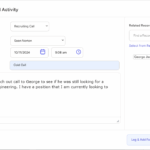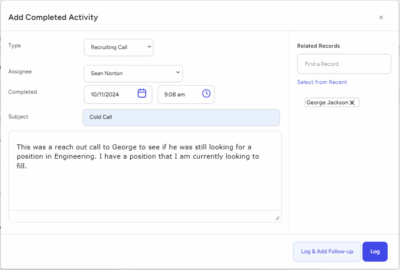Predictive analytics software is a powerful tool that uses statistical algorithms and machine learning techniques to analyze data and predict future outcomes. It is used in a variety of industries to make data-driven decisions, improve efficiency, and identify new opportunities. In this article, we will explore what predictive analytics software is, how it works, and its benefits.
What is Predictive Analytics Software?
Predictive analytics software is a type of software that uses statistical algorithms and machine learning techniques to analyze data and make predictions about future outcomes. It is used to analyze large datasets and identify patterns and trends that can help businesses make informed decisions about future operations, products, or services. This software can be used to predict customer behavior, identify fraud, optimize marketing campaigns, and improve supply chain operations, among other things.
How Does This Software Work?
Predictive analytics software uses a range of techniques to analyze data and make predictions. These techniques include:
Data collection: This software collects large amounts of data from a variety of sources, including internal and external sources such as customer data, social media data, and market data.
Data cleaning: Once the data is collected, it must be cleaned and preprocessed to ensure it is accurate and usable. This involves removing any errors or inconsistencies in the data and standardizing the format.
Data exploration: Data exploration involves analyzing the data to identify patterns, trends, and relationships. This is done using various statistical and visualization techniques to gain insights into the data.
Model building: Once the data is explored, predictive models are built using statistical algorithms and machine learning techniques. These models are trained using historical data and used to make predictions about future outcomes.
Model evaluation: Predictive models are evaluated to determine their accuracy and effectiveness. This involves testing the model using new data and comparing the predicted outcomes to the actual outcomes.
Model deployment: Once the model is evaluated and validated, it can be deployed for use in real-world applications. Predictive models can be integrated into other systems or used as standalone applications.
Benefits of Predictive Analytics Software
Predictive analytics software offers a range of benefits for businesses, including:
Improved decision-making: This software provides businesses with valuable insights into their operations and customers, allowing them to make informed decisions based on data.
Increased efficiency: Predictive analytics software can automate processes and streamline operations, leading to increased efficiency and cost savings.
Better resource allocation: This software can help businesses identify areas of the business that require additional resources and prioritize resource allocation accordingly.
Improved customer experience: Predictive analytics software can help businesses predict customer behavior and preferences, allowing them to personalize the customer experience and improve customer satisfaction.
Fraud detection: Predictive analytics software can identify fraudulent activity, such as credit card fraud, before it occurs, saving businesses money and protecting their reputation.
Risk management: This software can help businesses identify potential risks and develop strategies to mitigate those risks.
Competitive advantage: Predictive analytics software can help businesses stay ahead of the competition by identifying new opportunities and trends before they become mainstream.
Best Practices for Predictive Analytics
Predictive analytics software can be a valuable tool for recruiters and hiring managers looking to identify and hire top talent. By using statistical algorithms and machine learning techniques to analyze data, this software can help businesses make informed decisions about which candidates to hire. In this article, we will explore the best practices for using predictive analytics software to recruit and hire top talent.
Define your objectives: Before implementing predictive analytics software for recruitment, businesses should define their objectives and what they hope to achieve with the software. This may include identifying the most qualified candidates, reducing time-to-hire, or improving diversity and inclusion in the hiring process. Having a clear objective will help guide the implementation of the software and ensure that it is used effectively.
Collect quality data: This software relies on high-quality data to make accurate predictions. To effectively use the software for recruitment, businesses should collect data from a variety of sources, including resumes, job applications, assessments, and social media profiles. It is important to ensure that the data is accurate, complete, and relevant to the job being recruited for.
Keep models simple: Predictive models used for recruitment should be as simple as possible to ensure they are easily understood and can be implemented effectively. This means avoiding overly complex algorithms and instead focusing on the most important factors for success in the role being recruited for. It is important to involve subject matter experts in the development of the model to ensure that the factors being considered are relevant and appropriate.
Use the software to supplement human decision-making: Predictive analytics software should be used to supplement, not replace, human decision-making in the recruitment process. While the software can help identify top candidates, it is important to remember that it is only one part of the overall decision-making process. Recruiters and hiring managers should use their expertise and judgment to make final hiring decisions based on a variety of factors, including the candidate’s skills, experience, and cultural fit.
Monitor results: Predictive models used for recruitment should be monitored regularly to ensure they are accurate and effective. This may involve tracking key metrics such as time-to-hire, candidate quality, and retention rates. Any issues with the model should be identified and addressed promptly to ensure the software is being used effectively.
Focus on diversity and inclusion: Predictive analytics software can help improve diversity and inclusion in the hiring process by identifying candidates who may have been overlooked by traditional recruiting methods. However, it is important to ensure that the software is not perpetuating biases or discrimination. This may involve regularly auditing the software and adjusting the model as needed to ensure that it is fair and unbiased.
Continuously improve the model: Predictive analytics software is not a one-time solution, but rather a continuous process that requires ongoing refinement and improvement. Businesses should regularly review and update their predictive models to ensure they are effective and up-to-date with changing job requirements and candidate qualifications. This may involve collecting new data, adjusting the weighting of different factors, or updating the algorithms used to analyze the data.
Predictive analytics software can be a valuable tool for recruiters and hiring managers looking to identify and hire top talent. By following these best practices, businesses can ensure that the software is being used effectively and that it is helping to improve the overall recruitment process. However, it is important to remember that this software should not replace human decision-making, but rather supplement it to help identify the most qualified candidates for the job.








